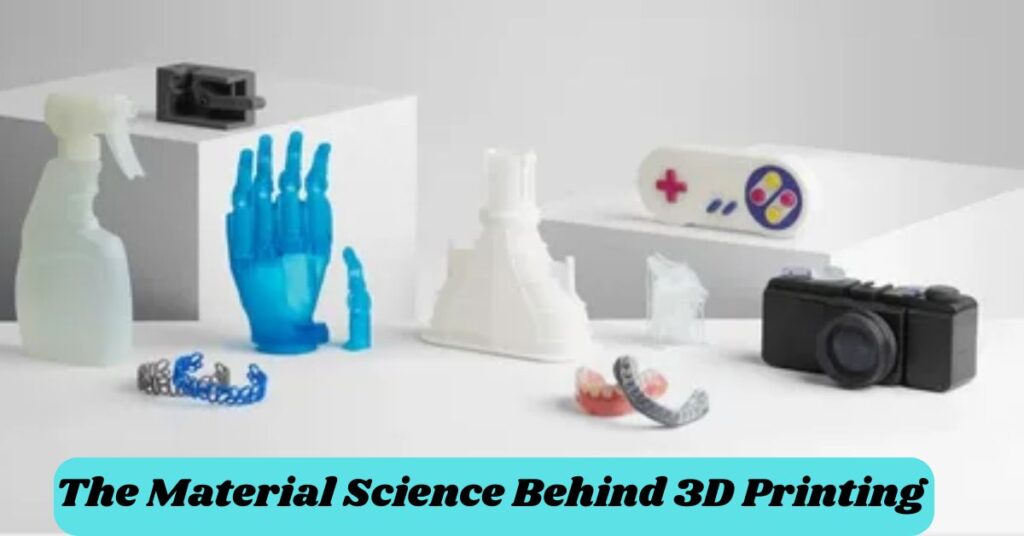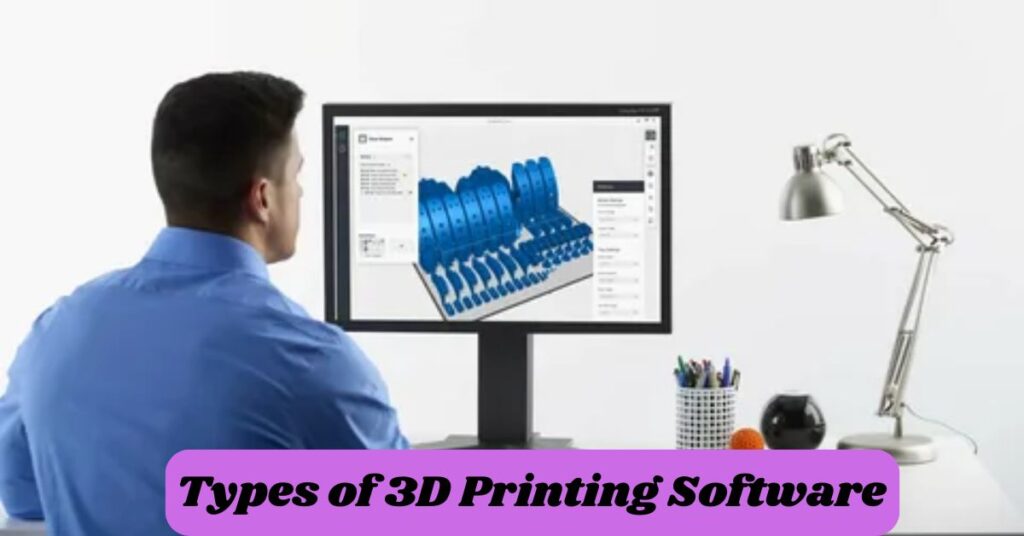Welcome to the world of 3D printing! Whether you’re just unwrapping your first printer or still researching this exciting technology, this guide will help you understand everything you need to know.
We’ll explore the fundamentals, history, applications, and how to choose your first printer. Let’s dive in and discover why 3D printing is revolutionizing how we create objects.
What Is 3D Printing?
3D printing, also known as additive manufacturing, creates three-dimensional objects by adding material layer by layer. Unlike traditional manufacturing which often cuts away material, 3D printing builds objects from the ground up. Think of it like stacking very thin pancakes on top of each other until you form a complete shape.
Most consumer 3D printers use plastic filament that gets melted and deposited through a hot nozzle. The printer follows precise instructions to place each layer exactly where it needs to go. After cooling, these layers fuse together to create solid objects with width, length, and height.
The beauty of 3D printing lies in its ability to create complex shapes that would be difficult or impossible using traditional methods. From simple toys to functional prototypes, the possibilities are nearly endless.
The History of 3D Printing
The journey of 3D printing began earlier than many people realize. The concept emerged in the 1970s, but the first working 3D printer appeared in the 1980s. Chuck Hull introduced Stereolithography (SLA) in 1984, creating the foundation for modern 3D printing.
For many years, this technology remained exclusively in industrial settings due to high costs and patent restrictions. The average person couldn’t access 3D printers until the late 2000s when parents began expiring and prices dropped dramatically.
Some Key Historical 3D Printing Milestones:
The 1980s saw the invention of SLA technology by Chuck Hull, who later founded 3D Systems Corporation. In the 1990s, new printing methods emerged including Fused Deposition Modeling (FDM) and Selective Laser Sintering (SLS).
A major breakthrough came around 2008 with the first self-replicating 3D printer, a machine that could print many of its own replacement parts. This development helped spread the technology even faster.
The 2010s brought the most significant changes. Expired patents led to an explosion of affordable consumer printers. Online communities formed to share designs, troubleshooting tips, and innovative applications. Suddenly, 3D printing became accessible to hobbyists, educators, and small businesses.
The Technology Behind 3D Printing
The core technologies driving 3D printing include several interconnected systems. At the heart is Computer-Aided Design (CAD) software, which allows users to create digital models of objects they want to print.
Once designed, these models get converted to STL files (Standard Tessellation Language), which breaks down the design into tiny triangles that the printer can understand. Specialized slicing software then converts these models into G-code instructions that tell the printer exactly where to move and when to deposit material.
The printer itself uses precise motors to control movement along three axes. The extruder pushes filament through a heated nozzle, melting it to temperatures around 200°C before depositing it onto the print bed. Layer by layer, at microscopic layer heights often measured in micrometers, the object takes shape.
How 3D Printing is Affecting Industries Around the Globe
3D printing isn’t just a hobby, it’s transforming major industries and economies worldwide.
The Economic Impact
The economic benefits of 3D printing extend across many sectors. Small businesses can now create prototypes without expensive manufacturing contracts. Product development cycles have shortened from months to days or even hours.
Local production becomes possible with 3D printing, reducing shipping costs and lead times. New jobs are emerging in design, software development, and machine maintenance. The industry itself is growing rapidly, with market values expected to exceed $40 billion by 2024.
Environmental Considerations
From an environmental perspective, 3D printing offers both challenges and opportunities. On the positive side, it reduces waste compared to subtractive manufacturing since it only uses the material needed. Many common filaments like PLA are biodegradable, made from renewable resources like corn starch.
Local production reduces transportation emissions. However, most filaments are still plastic-based, and failed prints can generate waste. The energy consumption of printers running for hours also creates an environmental footprint.
Social Implications
3D printing is democratizing manufacturing and enabling innovation. People can now turn ideas into physical objects without massive factories. Schools use 3D printers to teach STEM subjects in hands-on ways.
In healthcare, affordable customized prosthetics are changing lives in underserved communities. Artists and designers explore new creative possibilities previously impossible with traditional techniques.
Future Prospects
The future of 3D printing looks incredibly promising. We’re already seeing advancements in speed, material variety, and print quality. Soon, multi-material printing might become standard, allowing single prints with varying textures, colors, and properties.
Metal printing is becoming more accessible, expanding applications in aerospace and automotive industries. Perhaps most exciting is bioprinting using living cells to create tissue structures. While still experimental, this could revolutionize healthcare with personalized organs and treatments.
What Are Some Common 3D Printing Applications?
The versatility of 3D printing has led to its adoption across numerous fields.
The Medical Field
Medical applications of 3D printing are saving and improving lives. Surgeons use 3D printed models to plan complex procedures, reducing operating time and improving outcomes. Custom prosthetics fit patients perfectly at a fraction of traditional costs.
Dental professionals create aligners, crowns, and models. Researchers are developing bioprinting techniques to create tissues and, eventually, functional organs. Even hearing aids and medical tools now benefit from the customization 3D printing provides.
Aerospace Engineering
Aerospace companies use 3D printing to create lighter, stronger components. Complex parts that previously required assembly from multiple pieces can now be printed as single units. This reduces weight, improves performance, and lowers costs.
The ability to create complex geometries impossible with traditional manufacturing has led to more efficient designs. Companies like Airbus and SpaceX now integrate 3D printed parts into their aircraft and rockets.
Customized Gadgets and Accessories
The consumer market has embraced 3D printing for personalization. Phone cases, jewelry, keychains, and decorative items can be customized to individual preferences. Hobbyists create unique gaming accessories, camera mounts, and computer components.
Online marketplaces offer thousands of downloadable designs, while custom services print items to specification. This personalization trend continues to grow as printers become more affordable and user-friendly.
Home Improvement
3D printing has found practical applications around the home. Replacement parts for appliances, custom storage solutions, and decorative fixtures are commonly printed. When something breaks, homeowners can often print replacement parts rather than buying entirely new items.
Custom drawer organizers, wall hooks, cable management systems, and even furniture parts demonstrate the practical side of 3D printing technology. Some enthusiasts design solutions for unique household problems that mass-manufactured products don’t address.
Educational Tools
Schools increasingly use 3D printing to enhance learning. Students can create physical models of mathematical concepts, historical artifacts, or scientific structures. This hands-on approach improves engagement and understanding.
The process itself teaches valuable skills in design, problem-solving, and technology. Students learn to think critically about manufacturing processes and develop spatial reasoning abilities. Many educational institutions now consider 3D printers essential classroom tools.
The Material Science Behind 3D Printing

Material options for 3D printing continue to expand, with different properties suited to various applications. The most common materials for hobbyists include:
PLA (Polylactic Acid): Biodegradable, easy to print, and available in countless colors. Great for beginners but less durable than alternatives.
ABS (Acrylonitrile Butadiene Styrene): More durable and heat-resistant than PLA, but requires higher temperatures and may warp during printing.
PETG (Polyethylene Terephthalate Glycol): Combines ease of printing with greater durability and flexibility than PLA.
TPU (Thermoplastic Polyurethane): Flexible and rubber-like, used for stretchy or bendable creations.
Advanced industrial printers can use metals, ceramics, concrete, and even food ingredients. Research continues into new printable materials with enhanced properties.
Read This Blog : Fibertel OnThisVerySpot: Your Ultimate Guide to Reliable Internet
Some 3D Printing Key Terms
Understanding the terminology helps newcomers navigate this technical field more easily.
Print Quality Terms
Layer Height: The thickness of each printed layer, usually measured in millimeters. Lower values mean finer detail but longer print times.
Infill Density: The percentage of solid material inside the object. Higher percentages create stronger parts but use more material and time.
Print Speed: How fast the nozzle moves while printing, measured in millimeters per second. Faster isn’t always better quality often suffers at high speeds.
Calibration and Tuning Terms
Bed Leveling: Adjusting the print surface to ensure proper first layer adhesion and consistency throughout the print.
Extruder Calibration: Fine-tuning how much filament the printer feeds through the nozzle.
Temperature Setting: Different materials require different printing temperatures for optimal results.
Advanced Feature Terms
Dual Extruder: Printers with two nozzles that can print different colors or materials simultaneously.
Direct Drive: An extruder system mounted directly on the print head, providing better control for flexible filaments.
Bowden: An alternative extruder setup where the motor remains stationary and pushes filament through a tube to the moving print head.
Safety Terms
Enclosure: A case surrounding the printer that maintains stable temperatures and contains fumes.
Ventilation: Proper airflow requirements to remove potentially harmful particles or gases during printing.
Emergency Stop: A function to immediately halt printing in case of problems.
Firmware and Update Terms
Open Source Firmware: User-modifiable printer operating systems that allow customization and community improvements.
Firmware Updates: Software improvements released by manufacturers to fix bugs or add features.
The Types of 3D Printing
Several different technologies fall under the umbrella of 3D printing, each with unique advantages.
Fused Deposition Modeling
FDM (also called FFF or Fused Filament Fabrication) is the most common consumer 3D printing technology. It works by extruding melted thermoplastic filament layer by layer. The filament cools and solidifies, creating a solid object.
FDM printers are affordable, relatively easy to use, and offer a wide range of material options. They’re ideal for hobbyists, educational settings, and prototyping. However, they generally produce visible layer lines and may struggle with extremely fine details.
SLA (Stereolithography or “Resin Printing”)
SLA uses liquid resin that hardens when exposed to specific wavelengths of light. A laser or LCD screen cures each layer with incredible precision. After printing, objects require cleaning with solvents and additional UV curing.
Resin printing produces extremely detailed results with smooth surfaces. It’s excellent for jewelry, dental applications, and detailed figurines. However, the materials can be messy, potentially toxic, and the printers often have smaller build volumes than FDM machines.
SLS (Selective Laser Sintering)
SLS printing uses powdered materials (typically nylon) that a laser fuses together layer by layer. The unfused powder supports the structure during printing, eliminating the need for support structures.
SLS creates strong, functional parts with complex geometries. It’s mainly used in industrial settings due to high equipment costs. Parts have a slightly grainy texture but excellent mechanical properties.
Types of 3D Printing Software

Various software tools help transform ideas into printable objects.
CAD Software
CAD (Computer-Aided Design) software allows users to create digital 3D models. Options range from beginner-friendly programs like TinkerCAD to professional tools like Fusion 360 or Blender.
These programs let users design objects from scratch or modify existing designs. Learning basic CAD skills opens up endless possibilities for creating custom objects.
Slicing Software
Slicing software prepares 3D models for printing by converting them into printer instructions. Popular options include Cura, PrusaSlicer, and Simplify3D.
These programs allow adjustment of hundreds of settings affecting print quality, speed, and strength. They generate G-code files that tell the printer exactly where to move and when to extrude material.
Remote Interfacing Software
Remote interfaces let users monitor and control their printers from other devices. OctoPrint is a popular option that provides webcam monitoring, remote control, and detailed statistics.
These tools allow users to start prints, check progress, and even stop printing remotely adding convenience and safety to the printing process.
How to Choose a 3D Printer for Beginners?
Selecting your first 3D printer can feel overwhelming, but these steps will help you make an informed decision.
Establish A Budget
Quality 3D printers range from under $200 to several thousand dollars. For most beginners, the sweet spot lies between $200-500, offering reliability without breaking the bank.
Remember to budget for additional costs like filament, replacement parts, and upgrades. Starting with a moderately priced printer often provides a better experience than the cheapest available options.
Choose FDM First
For beginners, FDM printers offer the best balance of affordability, ease of use, and versatility. The materials are safer to handle, and the learning curve isn’t as steep as with resin printing.
Once you’ve gained experience with FDM, you can always explore other technologies like resin printing if your specific needs require it.
Choose the Right Features
Consider what features matter most for your intended use. Key specifications include build volume (print size capacity), extruder type, and connectivity options.
A build plate around 220x220mm offers versatility without excessive size. Direct drive extruders handle more materials reliably, while heated beds improve print adhesion. WiFi connectivity adds convenience but isn’t essential.
Additional Considerations
Choose Exceptional Software Compatibility
Look for printers compatible with popular slicing software. Some manufacturers offer customized versions of open-source slicers with optimized settings for their machines.
Good software support makes the learning curve gentler and helps achieve better results faster.
Choose Positive Reviews and an Established Community
Research user experiences through reviews and community forums. A strong community means more troubleshooting resources and shared knowledge when problems arise.
Look for printers with active user groups, detailed documentation, and readily available tutorial videos.
Choose Warranty Details and After-Sales Support
Reliable customer support can make a huge difference in your experience. Check warranty terms one year is standard and investigate how responsive the manufacturer is to questions or problems.
Availability of replacement parts and upgrade options extends the useful life of your printer.
The Best 3D Printer for Beginners
While many good options exist, printers from established brands like Prusa, Creality, and Anker offer excellent value for beginners. The Ender 3 series, Prusa Mini, and AnkerMake M5 consistently receive positive reviews for reliability and print quality.
Look for pre-assembled or easy-to-assemble models with automatic bed leveling if possible. These features significantly reduce frustration during initial setup and use.
Share Your Thoughts on 3D Printing
3D printing represents one of the most exciting technological developments of recent decades. The ability to create physical objects from digital designs has already transformed industries and hobbies alike.
As the technology continues to improve and prices fall further, we’ll likely see even more creative applications emerge. The community aspect remains one of 3D printing’s greatest strengths makers worldwide sharing designs, solutions, and innovations.
Frequently Asked Questions
Is 3D printing difficult to learn?
No, modern 3D printers are increasingly user-friendly. With online tutorials and pre-sliced models, beginners can successfully print within hours of setting up their machine.
How much does filament cost?
A standard 1kg spool of PLA filament costs between $20-30 and can print numerous objects. Specialty filaments may cost more but offer unique properties like flexibility or wood-like appearance.
Can 3D printers make money?
Yes, many users turn their hobby into income by selling printed items, offering local printing services, or creating and selling unique designs online.
Are 3D printers dangerous?
When used properly, consumer 3D printers are generally safe. Basic precautions include adequate ventilation, keeping children away from hot components, and following manufacturer guidelines.
How long does 3D printing take?
Print times vary widely depending on size, complexity, and quality settings. Small objects might print in under an hour, while large detailed prints could take over 24 hours to complete.
Conclusion
3D printing offers an exciting blend of technology, creativity, and practical problem-solving. Whether you’re looking to create prototypes for business, educational models, replacement parts, or artistic expressions, this technology opens doors previously unavailable to individual creators.
The learning curve might seem steep initially, but the journey is rewarding. Each successful print builds knowledge and confidence, while even failed prints provide valuable lessons. The online community offers abundant resources to help troubleshoot problems and improve skills.
As you begin your 3D printing adventure, remember that patience is essential. Take time to understand the fundamentals, start with simple projects, and gradually tackle more complex challenges. Before long, you’ll wonder how you ever lived without the ability to transform digital ideas into physical reality.










